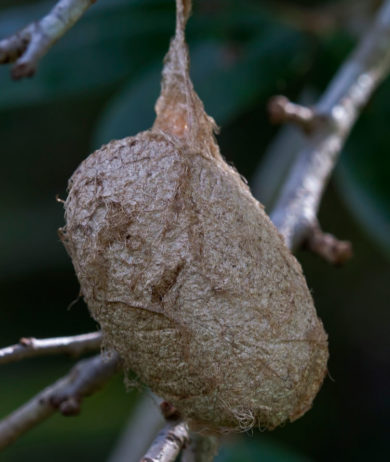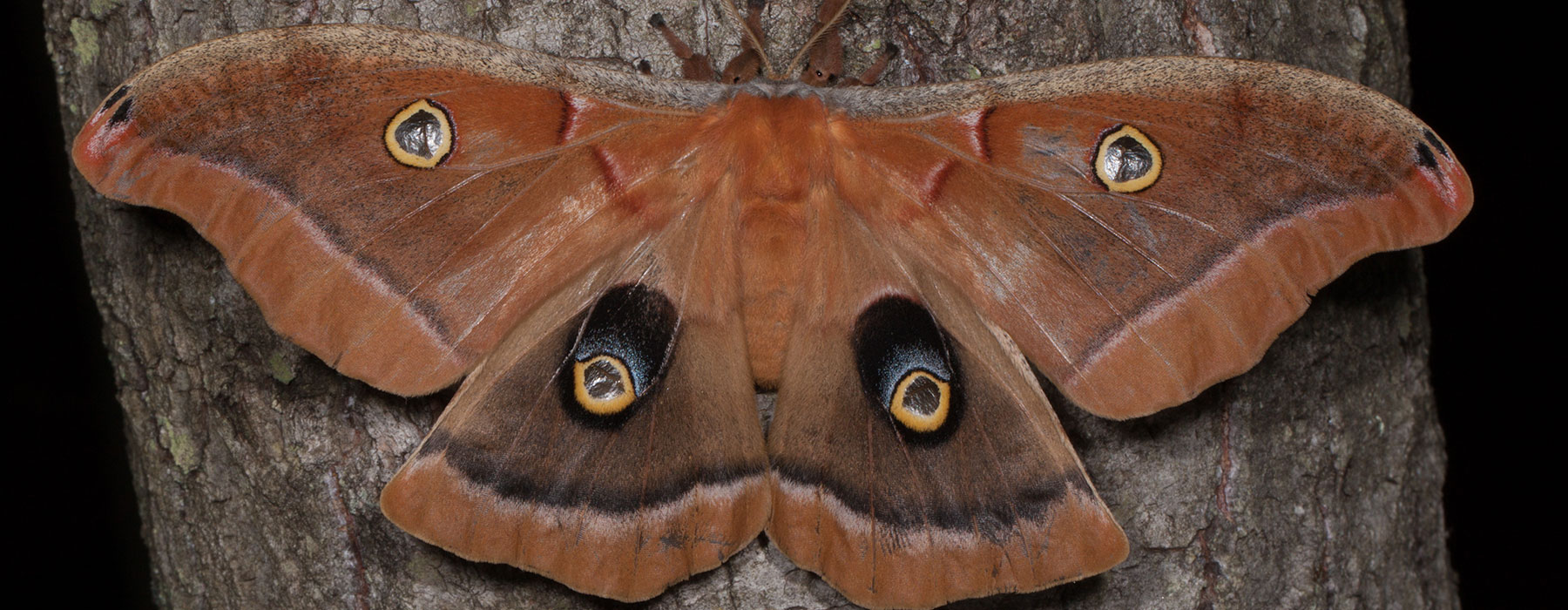With a wingspan of up to 5 ½ inches, the Polyphemus moth is one of the largest and most striking Lepidoptera in Vermont. Due to its enormous hindwing eyespots, this moth was named after the Greek myth of the Cyclops Polyphemus. Adults emerge from their cocoons in the late afternoon, and mating occurs the same day, from late evening to early morning. After hatching, females begin releasing a pheromone in order to attract males and mate. They lay their eggs that evening, singly or in groups of 2 or 3 on leaves of the host plant. Newly hatched caterpillars eat their eggshells, and caterpillars of all ages are solitary. Older caterpillars eat an entire leaf and then cut the leaf petiole at the base so it falls to the ground, perhaps a defensive measure to eliminate signs of feeding.
Cocoon Identification

© Richard Crook
Cocoons are attached directly to twigs of trees and shrubs. They are tan to off-white, thick and elliptical in shape. Cocoons may be attached longitudinally to a twig, hang on a twig from a silk peduncle, attached to leaves and fall to the ground with the leaves, or spun into leaves and grasses on the ground.
Cocoons with a small, circular exit hole at one end (not to be confused with a larger emergence hole by the moth itself or a hole from a hungry woodpecker) can indicate that the Polyphemus moth was parasitized by a parasitic wasp. If there is a hole in the cocoon and a dead moth pupae within it, it became a parasite meal.
For more information, visit this document.
Conservation Status
Resident – uncommon
Vermont S3
Global G5
Distribution and Habitat
Found across the state of Vermont. Habitat includes deciduous forests, wetlands, and orchards. Adults are attracted to lights.
Host Plants in Vermont
- Oaks (Quercus)
- Willows (Salix)
- Maples (Acer)
- Birches (Betula)
- Apple (Malus)
- Dogwood (Cornus)
- Elm (Ulmus)
- Hazel (Corylus)
- Hickory (Carya)







